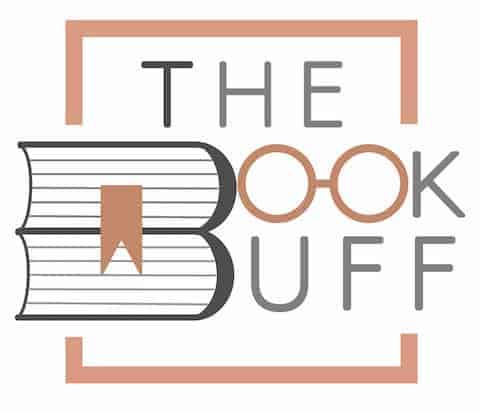What is Speed Reading? [A Complete Beginner’s Guide!]
Disclosure: This post may contain affiliate links. – meaning I may get a commission if you decide to purchase through my links, at no additional cost to you.
Nowadays, the term “speed reading” has become a buzzword. When you complain that you don’t have the time to go through all the information needed for your next meeting, the advice you get is “speed-read the material.”
Even when you tell someone that you don’t get time to read for leisure anymore, you most probably will get the response “speed-read your books and you will be able to read more in the time you have.”
But what is speed reading? And is it a cure for all time-consuming reading activities?
Speed Reading is a technique that teaches people to read faster and comprehend a lot more written information in a shorter time. The technique focuses on not only increasing the number of words read per minute but also maintaining a certain comprehension level to absorb information faster.
This article will help you understand the basics of speed reading as a concept. It will also help you understand the speed reading techniques at a high level, the reading speed that can be achieved, and a bit more information that you perhaps need to know to make a decision whether it is worth the investment of your time or not!
So, without further adieu, let’s get started!
Pro Tip! If you want to improve your reading speed, I’d highly recommend you to check out this speed reading course. It is perfectly suited for beginners! It is very affordable and comes with a 60-day full money-back guarantee! So, you have nothing to lose!
What is the Purpose of Speed Reading?

There are some obvious reasons to train yourself to read faster. Let’s look at some of the reasons below –
Main Purpose
The main purpose of speed reading is to increase a person’s ability to absorb and comprehend written information fast, and later be able to recall it. In other words, speed reading makes it easier for you to read more efficiently.
The ability to absorb information fast and recall it later is important for everyone, whether it is a student who has to prepare for an examination, a professional who has to stay abreast of trends, or a business person leading a team.
The faster you can read, the more information you absorb, and the better decisions you can make.
Other Benefits
But speed reading has other more indirect benefits as well. When you are speed reading you “exercise” your brain to function on a higher level. Certain areas in the brain are activated by speed reading and then they perform better. These better performances include
- an improved memory,
- better focus abilities,
- higher levels of self-confidence,
- improved logic and critical thinking, and
- emotional well-being.
Is it Possible to Improve Your Reading Speed?
It is possible to improve your reading speed. By reading more and practicing speed reading often, your reading speed can improve between 20% to 50%. You can read more about this in another article that I published on my site – Can You Improve Your Reading Speed? Here’s What to Know!
But how do you practice speed reading?
Simply put, you will read faster if you’ve removed all the obstacles that are causing you to read at a slow rate.
Remove Physical Problems
If you have a physical problem like an eye defect that influences the width of the fixations they make when reading, you will read slow. You will be able to read faster when this physical problem has been rectified.
Stop Sub-Vocalization
A common reason for reading slowly is that you pronounce every word in your head when you are reading. This is called sub-vocalization. If you practice preventing saying the words in your mind when you read you will find that you read faster.
Stop Regressive Eye Movement
Regressive eye movements are another reason for slow reading. If you can break away from the habit of going back to the beginning of a sentence to read it again, it will be possible to read faster.
Focus on the Book You’re Reading
Many people read slowly because they don’t focus on their reading. If you concentrate only on the book you’re reading you’ll also find that you read faster.
Thus, the answer to the question of whether it is possible to improve your reading speed is a definite “yes.”
How Fast Do Speed Readers Read?
Generally speaking, the average reading speed of the speed readers varies between 400 – 700 wpm (words per minute). Exceptionally good speed readers can achieve a speed of 1000 wpm while maintaining a 50-70% comprehension range.
In order to understand what that means, first, we have to determine how fast must a person read to be considered a speed reader. To do that, we have to consider the average reading speed of a normal person.
Related Article – How Fast Do People Read? [Complete Guide!]
If there is something like a “normal” reading speed, faster speeds can be seen as speed reading.
Speed Read with Comprehension
It is generally accepted that the average reading speed of an adult reader is usually between 200 to 250 words per minute.
There is consensus between researchers that “good” speed readers read between 400 and 700 words per minute, and exceptional good speed readers can read up to 1,000 words per minute.
Note – check your reading speed to compare it with speed readers
Exceptionally Fast Readers
There are faster readers but they generally only read mechanically, meaning their comprehension of the content and the retention of the text are normally very low.
Howard Stephen Berg is recognized as the world’s fastest reader. It has been acknowledged in the 1990 Guinness Book of World Records that he can read more than 25,000 words a minute.
How to Speed Read?

There are different ways of reading that enhance your reading speed.
1. Skimming
Skimming helps to familiarize you with the text. By skimming a text, you get the overall idea of the content. When you skim a text you do not need to read each word. You just quickly go over the text and stop your eye movement only on any highlighted portions or graphics.
With frequent skimming, you train your eye to search for relevant parts and to skip over not-so-important sections.
Skimming increases your reading speed, but as it doesn’t help you to remember much of the text, it is commonly used to re-read texts that are familiar to you already or to pre-read a text you want to read in more detail later.
Typically, a student will skim through study material just before a test, or the CEO of the company will refresh his memory regarding the flow of his presentation before he delivers it. Or you use the skimming technique to get the gist of a book or document before you read it again for more detail.
2. Scanning
Scanning is the type of reading where you actively look for information in the text. But you still exclude not-so-important content and thus save time.
You normally use a pre-set mind-map in which you’ve visually organized the outline of what you expect the outcome to be. The information for the outline of the mind map can come from various sources, including the skimming you’ve done of the text.
The scanning of the content then includes the main point as well as headings and important information.
You may think it will take longer to skim and scan than just read the text once, but you save time as the skimming is very fast, and with the scanning, you only look at the important aspects. In total, you’ve been speed-reading the content as it has taken you less time than reading it “normally.”
3. Meta guiding (Pointer method)
Meta guiding is the method that was discovered by Evelyn Wood to improve reading speed. With this technique, you use a visual guide or a pointer to assist eye movement.
You can use your finger to trace the words as you read. Your finger guides your eyes to the place where you are in the text and helps to increase reading speed.
4. Pointer and Tracker Method
This technique is a variant of the Meta guiding method. Instead of your finger, you use a pen with its cap still on to point at the words, and as you read you underline or track each line.
If you keep your eye above the tip of the pen it will help to increase the speed at which you take in each line. It also improves your focus on the words.
Start reading with this technique by spending no more than one second on each line. Then increase your speed with each new page.
How Long Does it Take to Improve Reading Speed Using Speed Reading?
Depending on your initial reading speed, it can take about 30 to 90 days on average to see the most improvement in your reading speed when using speed reading techniques for about 1 hour/day. Your reading speed can continue to improve over the next 6 to 12 months as you practice regularly.
There are different aspects, like what techniques you are using to learn speed reading, that influence how fast you can learn to speed read. With some techniques, you can experience a faster reading rate within a few hours if your reading speed is poor, to begin with.
Can Learn Basics in One Day
It is generally accepted that with a good course and dedication you can learn all the major techniques of speed reading in one day.
With most courses, you will be able to see some improvement by the end of the first day’s training. Sometimes, an improvement of up to 100% to that of your present reading speed is also seen within the first few days of practice.
Consistent Practice
But like any other skill, to sustain the faster reading speed and to even increase it further, it takes consistent practice. If you practice the techniques consistently for one month, you will most likely experience a huge improvement in your reading speed.
If you keep on practicing the skills, you are giving yourself a gift for life. You’ll never forget the techniques and it depends on you when and where you are applying them.
One thing to remember is that although you may see a major improvement in your reading speeds immediately, the increase in speed will taper off over time even with regular practice. This is because we can’t improve our reading speeds beyond a point as humans.
However, as you practice on a regular basis, you will notice that even though your reading speed may increase marginally, your comprehension ability will continue to increase!
Difference Between Speed Reading and Intensive Reading

Although speed reading and intensive reading are in principle two different reading styles, speed reading can contribute to the intensive reading process.
Main Difference
The main difference between speed reading and intensive reading is that with speed reading the emphasis is on the broader content and you actually “skip over” unknown words and phrases, while to read intensively is to systematically look up every word, phrase, or collocation that you do not understand.
Speed Reading Can initially Assist with Intensive Reading
Speed reading is an extensive type of reading and therefore different from intensive reading, but scholars often use speed reading as the first step to analyze what they have to study.
After they’ve determined the “bigger picture” of the content through speed reading, they read the text again intensively.
How Does Speed Reading Affect Comprehension?
Correct speed reading allows you to grasp what is being read fast and helps to cut down the time you spend on reading the text. With speed reading, you can increase your comprehension as you concentrate on what you are reading.
But when determining how speed reading affects comprehension, it must be kept in mind that there is a difference between mechanical reading at high speeds and actually comprehending what you are reading. The purpose of successful and efficient speed reading is to enable you to take in more information in less time.
When you just read thousands of words per minute but have no retention of the content, the speed reading session has been a waste of time. The secret of efficient speed reading is to get the balance between the words per minute and the percentage of comprehension.
We as humans are visual creatures. We comprehend much more when we are able to “think in pictures.” In order to comprehend effectively while speed reading, you need to ‘translate” the words into pictures.
And if you can do that at the rate that you are speed reading, your comprehension of what you’re reading can increase by 30% or more.
Apps For Speed Reading
To master speed reading faster you can use one of the excellent apps available to assist you.
We’ve had a look at some of the best apps and gladly share our findings of three of these apps to help you choose an app that will work the best for you.
1. ReadMe!
The ReadMe! app has been awarded by Stanford University for its efficiency as It aims to increase fluency for all readers including those with learning difficulties.
The app features two speed-reading tools called BeeLine Reader and Spritz. The BeeLine Reader has a color-coded approach. It speeds up reading by adding a color gradient to each line of text. This guides your eyes from the end of one line to the beginning of the next line of text.
Spritz is designed to allow you to read one word at a time at a certain rate. The aim is to minimize eye movement. The developers of Spritz claim that it helps you to read at a rate of up to 1,000 words per minute.
The ReadMe! app is available for iPhone, iPad and Android devices. It offers a subscription on a monthly basis that can be renewed automatically. It also allows you to test it for free.
2. Spreeder
The designers of the Spreeder app claim that the app will help you to learn how to read three or more times faster than you are normally reading. It uses state-of-the-art speed reading software and the app provides access to a tool that you can customize to read at a comfortable pace.
Speeder also provides progress reports that you can use to advance your reading skills as quickly and effectively as possible.
The web and mobile basic apps are free to use, but you get advanced training and other features by upgrading to Spreeder CX. When you upgrade to Speeder CX you receive access to software-based learning with a variety of training resources. These include lessons by world-recognized professionals in the field.
The Spreeder app is available for Mac, Windows, iPad, and iPhone.
3. Reading Trainer
The unique feature of the Reading Trainer app is that it starts by testing your current reading speed and, importantly, checking how many words per minute can you read and still have good comprehension.
The app requires you to read a text and then answer a short multiple-question quiz. This is to determine how much information you can correctly retain.
Once the app has determined all this the app will lead you through fun exercises aimed at improving your reading abilities. The app is ideal for students wanting to improve their research and revision skills.
The app is available for Android, iPhone, and iPad devices.

About the Author
Akansha is a former business journalist and a seasoned communications professional. She is the founder of TheBookBuff, an avid storyteller, and a lifelong biblophile! Check out her profile page to know more about Akansha.

![How to Gift Kindle Unlimited? [Step-by-Step Guide!]](https://thebookbuff.com/wp-content/uploads/2022/09/Kindle-kept-on-a-table-300x200.webp)

![How to Return Kindle Unlimited Books? [Full Tutorial!]](https://thebookbuff.com/wp-content/uploads/2022/11/kindle-g16b2c0263_1920-300x200.jpeg)
![Can Reading Aloud Help With Stuttering? [Here’s How!]](https://thebookbuff.com/wp-content/uploads/2021/12/pexels-karolina-grabowska-7281581-300x200.webp)

![Does Reading Make You Successful? [And What to Read!]](https://thebookbuff.com/wp-content/uploads/2022/02/pexels-august-de-richelieu-4427422-300x200.jpg)